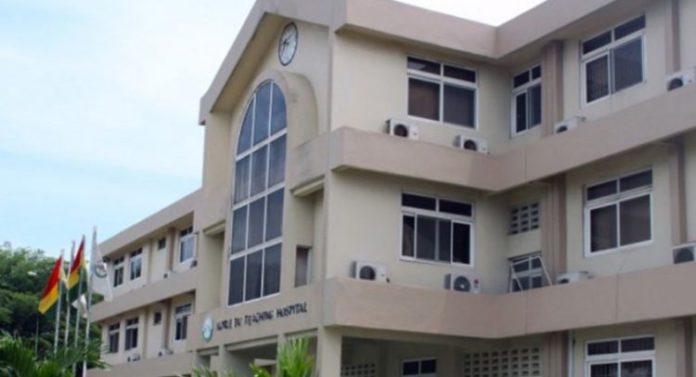Management of the Korle-Bu Teaching Hospital has denied negligence in the death of a 27-year-old man who reportedly died at the facility.
In a video circulating on social media, an aunt of the deceased identified as Reverend Nana Yaa Owusu Prempeh alleged that Nana Ayeyi Agyei Benuah died at Korle Bu as a result of a lack of an ambulance and bed as of the time of arrival.
However, a statement signed by the Head of Public Relations, Mustapha Salifu said the patient was brought in dead.
The statement added that all patients brought in dead were examined before a declaration and in this case, the medical officer on duty went into the car to examine patient and found that the pupils were dilated and fixed.
“From the professional judgement of the staff on duty, this was sufficient indication that the patient had passed after examining the patient,” the statement disclosed.
Read the full statement below:
SUBJECT: RE: NO AMBULANCE, NO BED, NO SANITISER AT KORLE BU EMERGENCY ROOM
An investigation has been conducted by the Public Relations Unit in relation to a YouTube video circulating on social media.
This link (https://www.youtube.com/watch?v=mjL-Q9VvP20) involves a lady lamenting the treatment she had that led to the death of her 27-year-old nephew.
The issues raised in the video are as follows:
1. She stated that there was no ambulance to pick her nephew from the home to the hospital.
2. She also pointed out the unavailability of hand sanitisers at the Hospital’s Accident and Emergency Centre for her use.
3. She said there was no bed for the admission of her nephew.
4. She said the doctor did not follow protocols to declare her nephew’s death.
From the investigations conducted by the PR Unit at the A&E Centre, the following were the responses given to the issues raised by the complainant in the video.
1. The ambulance issue does not fall within the purview of the hospital and, Korle Bu could, therefore, not be blamed for the unavailability of an ambulance to convey a patient to the hospital.
2. On the issue of unavailability of hand sanitisers, our investigations established that a handwashing stand with soap and tissue paper has been provided for use by visitors at the Emergency Centre. The handwashing facilities are hygienically superior to the hand sanitisers that the complainant was looking for.
3. As a hospital, we try as much as possible not to turn any patient away. However, at the time the said patient was brought to the A&E, the Centre was full beyond its capacity and arrangement was being made to create space for the patient.
4. The nephew was brought in dead (BID). All patients brought in dead are examined before being declared dead. In this case, the medical officer on duty went into the car to examine patient and found that the pupils were dilated and fixed. From the professional judgement of the staff on duty, this was sufficient indication that the patient had passed after examining the patient.
From our investigations, the issues raised by the complainant border more on the emotional display of the loss of her nephew than the reality of it.
However, staff members must be urged to exercise greater circumspection in dealing with patients’ relatives who come with emergencies.
MUSTAPHA SALIFU
HEAD, PUBLIC RELATIONS

